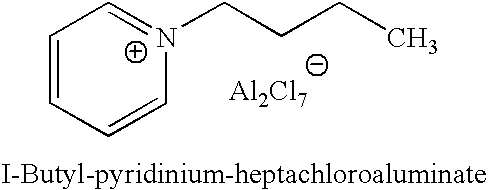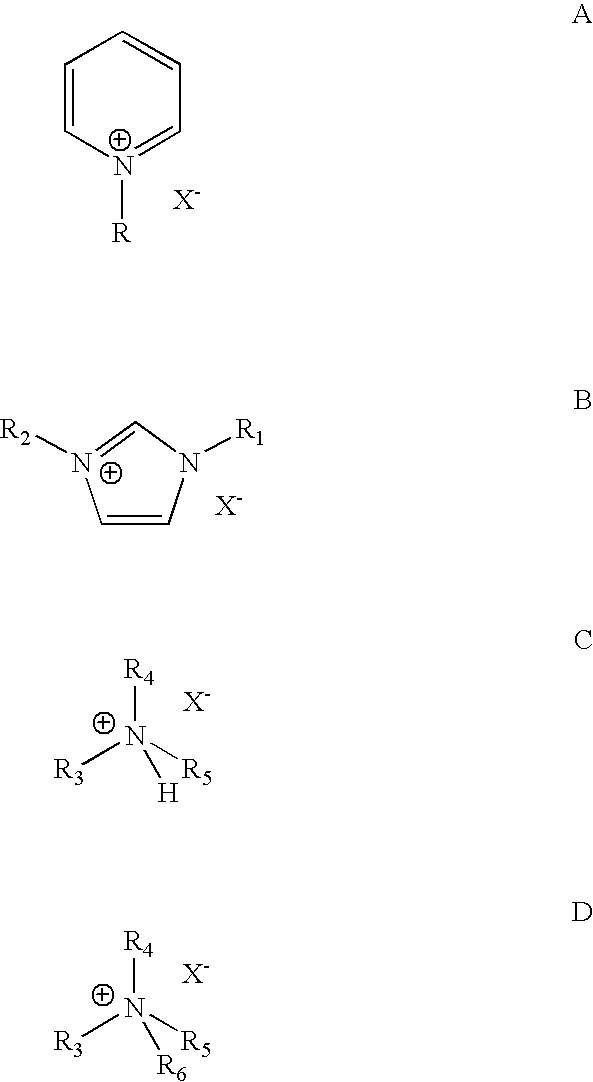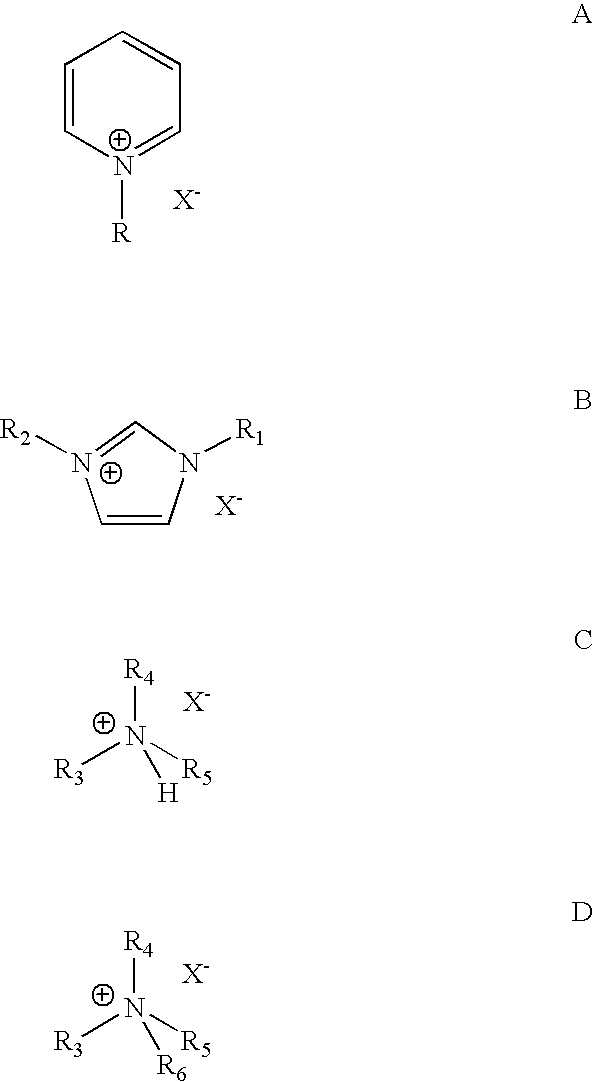Isomerization of butene in the ionic liquid-catalyzed alkylation of light isoparaffins and olefins
a technology of light isoparaffin and ionic liquid, which is applied in the direction of organic compound/hydride/coordination complex catalyst, physical/chemical process catalyst, hydrocarbon oil treatment product, etc., can solve the problems of no viable replacement for the current process in commercial refineries, and the need for safer and environmentally friendly catalyst systems has become an issue for the industries involved
- Summary
- Abstract
- Description
- Claims
- Application Information
AI Technical Summary
Benefits of technology
Problems solved by technology
Method used
Image
Examples
example 1
Continuous Alkylation of Isobutane with C4 Olefin Isomers
[0039]Each isomer of the four butene isomers was alkylated with isobutane in a 100 cc continuously stirred tank reactor. An 8:1 molar ratio of isobutane and butene mixture was fed to the reactor while vigorously stirring at 1600 RPM. An ionic liquid catalyst, N-butylpyridinium chloroaluminate, was fed to the reactor via a second inlet port targeting to occupy˜10 vol % in the reactor. A small amount of anhydrous HCl gas was added to the process. The average residence time for the combined volume of feeds and catalyst was about 8-20 min. The outlet pressure was maintained at 100 psig using a backpressure regulator. The reactor temperature was maintained at about 0-20° C. The reactor effluent was separated in a 3-phase separator into C4- gas; alkylate hydrocarbon phase, and the ionic liquid catalyst. The total liquid product and gas samples were analyzed using gas chromatography (GC). Research octane number of alkylate gasoline w...
example 2
[0042]To a 30 gm of H-ZSM-5 / Al2O5 in 300 cc autoclave 100 gm of liquefied 1-butene (99%) purity) was added. The mixture was heated to 100° C. and stirred at the autogenic pressure (435 psi) for 1 hour. A gas samples before and after the reaction were analyzed by GC analysis. The GC analysis indicated that the sample collected after the reaction contained 79% 2-butenes and 21% 1-butene.
[0043]By combining this olefin isomerization process with the alkylation process using the ionic liquid catalyst, the Research Octane Number of the final alkylate gasoline is increased by 25 numbers.
example 3
[0044]The reaction procedure described in Example 2 was repeated exactly with the exception of using 100 gm of 50 / 50 mixture of 1-butene and 2-butene instead of 1-butene, GC analysis of a gas sample after the reaction indicated that mixture now contains 84:16 mixture of 2-butene:1-butene. This indicates 68% conversion of 1-butene to 2-butenes.
[0045]By combining this olefin isomerization process with the alkylation process using the ionic liquid catalyst, the Research Octane Number of the final alkylate gasoline is increased by 9 numbers.
PUM
| Property | Measurement | Unit |
|---|---|---|
| pressure | aaaaa | aaaaa |
| temperature | aaaaa | aaaaa |
| molar ratio | aaaaa | aaaaa |
Abstract
Description
Claims
Application Information
 Login to View More
Login to View More - R&D
- Intellectual Property
- Life Sciences
- Materials
- Tech Scout
- Unparalleled Data Quality
- Higher Quality Content
- 60% Fewer Hallucinations
Browse by: Latest US Patents, China's latest patents, Technical Efficacy Thesaurus, Application Domain, Technology Topic, Popular Technical Reports.
© 2025 PatSnap. All rights reserved.Legal|Privacy policy|Modern Slavery Act Transparency Statement|Sitemap|About US| Contact US: help@patsnap.com



